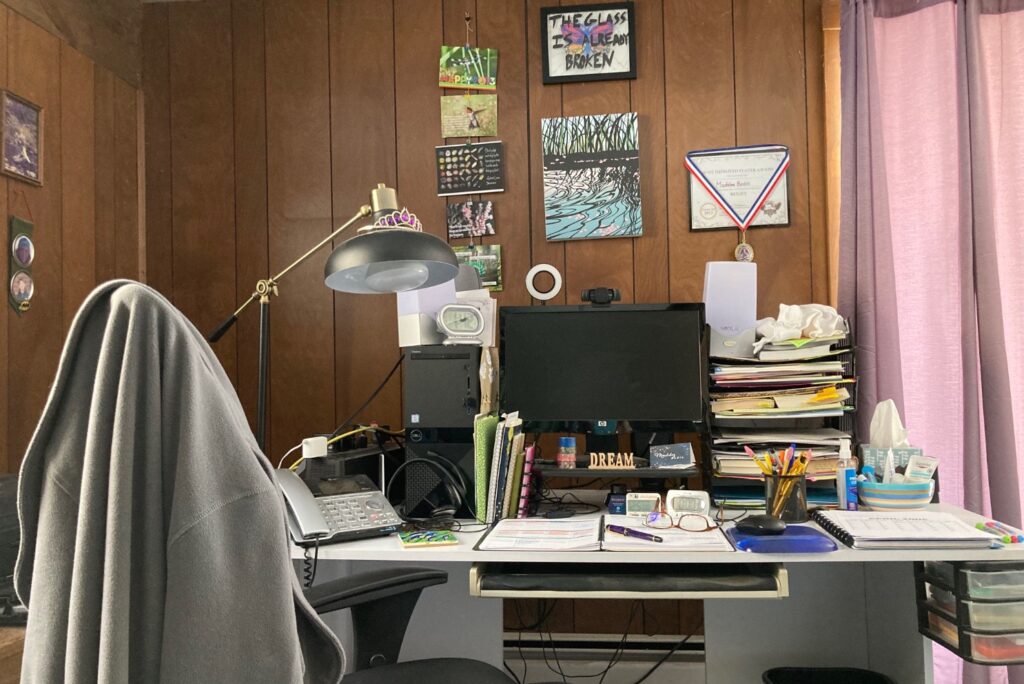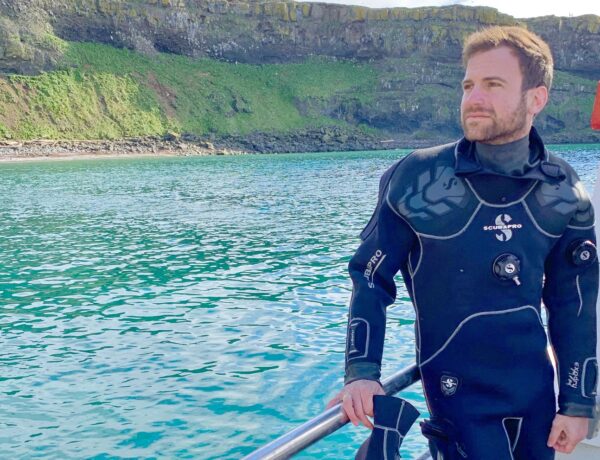Madeline Bodin is a journalist with a passion for writing stories that engage readers’ emotions and deepen their understanding of important issues. Her writing has taken her to a diverse range of places, including wind farms, flood-control dams, turtle sanctuaries, and bat caves.
Her work has appeared in publications such as bioGraphic, Hakai, High Country News, Discover, Scientific American, Popular Mechanics, and Undark. Her articles have also been featured in newspapers like The Boston Globe, The Christian Science Monitor, The Rutland Herald, and The Hartford Courant. Madeline was a frequent contributor to Newsday’s weekly science section for five years.
In addition to her journalism, she has contributed essays to books such as The Outside Story: Local Writers Explore the Nature of New Hampshire and Vermont and The Outside Story, Volume 2. She also contributed an essay on native plants to the Encyclopedia of New England (Yale University Press).
Looking for inspiration to help you achieve your writing goals? Subscribe to our newsletter for exclusive insights into the routines, habits, and techniques of some of the most celebrated authors in history.
Hi Madeline! We’re delighted to have you as a guest on Famous Writing Routines. Can you tell us about your background and how you got into journalism, specifically writing about science and the environment?
I have loved reading, writing, and science for as long as I can remember. But I didn’t realize there was such a job as a science journalist until I was an adult. Four years after graduating from college, after a brief turn in book marketing and publicity, I was a staff writer for a telecommunications magazine, and that felt very close to where I wanted to be.
But it took years, and becoming a full-time freelance writer, before I was writing mostly about science and the environment. I accomplished that switch simply by pitching science and environmental stories as a freelancer. I am passionate about narrative and have managed to squeeze stories or story elements into articles of all sizes, including one that was only 125 words long. (That was for a print publication. I don’t think it was ever online).
Your writing often takes readers to unique and sometimes remote locations. How do you choose the subjects for your articles and what is the research process like for you?
I have mostly followed my curiosity to find subjects for articles, but some of the most interesting places I’ve gone – such as the Kansas wind farm and the depths of a flood control dam mentioned that are on my website – were the result of focusing on where my ability to report and the needs of a specific publication overlapped.
Early in my career, I was advised by some smart and successful freelance writers that this was the most effective way to find story ideas. They urged me to look for ideas that fit a publication rather than trying to find a publication to fit my ideas. I agree with this advice whole-heartedly, but my weakness seems to be falling in love with article ideas that have no ready market.
As a journalist, you’ve said that your job is to write stories that engage readers on a sensory and emotional level, can you elaborate on that and why you believe it’s important in your writing?
I believe this balance between ideas, feelings and the observable real world is particularly important for science journalism, where it’s easy to get too thinky. I work so hard to bring big concepts down to the level where there is something to see, to hear, or even to touch because that’s how I understand things. My hope is to help readers understand too.
I want to offer readers is an experience, not just information. For example, if I write “bumblebee thermoregulation,” who will remember or even understand those two words? But one cool fall day, a scientist put a male bumblebee (they don’t sting!) in my hand. It was fuzzy, it vibrated with its buzzing, and it was a tiny warm spot against my palm and fingers. I want readers to have that experience too.
What advice do you have for aspiring science and environment journalists and how they can hone their craft and succeed in this field?
I think these are tough times for all journalists. I suspect that human beings have never read as many words in the average day as we do now, yet the jobs of reporting and writing are undervalued, financially and culturally. I think the best place to start is at a staff job, if you can possibly get one.
I came up before internships were a thing, and I’m wary of young people being underpaid in the name of experience. You’ll need persistence to succeed. And even after you’ve succeeded, you’ll need to be flexible because everything will change, and keep changing. Journalism is incredibly important and emotionally rewarding work. There is every reason in the world to do it. I can only hope that the industry will stabilize soon so that making a living as a journalist will become a little easier.
Discover the daily writing habits of authors like Stephen King, Neil Gaiman, and Gillian Flynn with Famous Writing Routines Vol. 1 and learn how to take your writing to the next level. Grab your copy today!
Can you walk us through what your creative process looks like when developing a story?
My creative process has shifted significantly in the nearly 35 years that I’ve been writing professionally. I hope that it’s comforting for aspiring writers that what works for you at 25 may not be what works at 50, and that’s not because you’ve discovered some objectively better system. I had different strengths at 25 than I do now.
I’m constantly trying new things and adjusting my process for the next story. Story development starts for me when I feel that tickle of an unanswered question. I really should get better at asking myself whether that question is one that anyone else wants the answer to, but that’s how it usually starts.
Lately, I’ve been trying to ask questions to get at the narrative earlier in the process. Is there a person who has a goal? Is that person willing to talk about the obstacles that stand in the way of reaching that goal? Is there something for me to see, hear, or experience along with this person? I’m also getting a little better at seeing that the protagonist of the story can be a group of people, an idea, or even a place.
What does a typical writing day look like for you?
I have the luxury of journalism being my only job at the moment. Every day may be a tiny bit different, but mostly, I’m at my desk, emailing to set up interviews, interviewing people by phone or video, writing, or sometimes doing online research. I try to get out to report in person as often as is practical. And since not everything is online, I travel to archives when I’m doing historical research.
I suspect that routines are less important to journalists, since we are so driven by deadlines and other people’s availability to talk. I think they are more important to fiction writers, poets, or anyone who has an important creative project that’s not part of their nine-to-five job.
It’s hard to motivate yourself if you need to squeeze writing in around the rest of your life, especially if there is no deadline looming or an editor waiting. I’ve been there. Because writing is my job now, my routine is pretty much identical to the routine of anyone else who mostly works at a computer in an office, and has meetings, mostly by phone and video, but occasionally in person.
A few years ago, I kept coming across this writing tip that if you started your writing session with a ritual, it would signal your brain that it was time to work, helping you get over that hump of starting to write. I considered all possibilities, including candles, meditation, prayer, yoga, and affirmations, until I realized that I already have a tiny ritual. I make a cup of tea every morning before sitting down at my desk. While I didn’t change what I do, I think realizing that a cup of tea is part of my ritual helps me get started, at least a little.
If you could have a conversation with an author throughout history about their writing routine and creative process, who would that person be?
I’m completely fascinated by writing routines, and I was tempted to say that my fascination has shifted over the years, and that I no longer try to glean tips but enjoy stepping into a more successful writer’s life, if even for a moment. But who am I kidding? I’m still trying to learn something helpful every time.
For that reason, I think I’m going to skip historical figures. Victor Hugo having his valet hide his clothes until he finished writing his novel is hilarious and strange, but doesn’t have a lot to offer me. There are three writers I would love to learn more about.
First, Sabrina Imbler, who has a relatively new book out, How Far the Light Reaches: A Life in Ten Sea Creatures. They are pretty much my perfect writer, both insightful and hilarious. I want to know all their writing secrets. Similarly, Ed Yong, who covers science for The Atlantic and has written two books, probably has my dream job and maybe my dream life. I’d love to live vicariously by learning some of his writing routines. Finally, for you non-science writers out there, I’m going to say Rebecca Solnit, whose essays on writing, power, and more I adore. (I was going to say Ann Patchett, famous as a novelist, but I am a huge fan of her essays and memoir, but you’ve already written about her.)
I’d love to know about the books you’re reading at the moment. What have been some of your favourite reads?
I love to read. I see the relationship between reading and writing as being similar to the relationship between inhaling and exhaling. I tend to go on jags between reading for work and reading for pleasure. And I’m not even counting the books I read to research an article, because that’s a different kind of reading entirely. I’m trying to do better at balancing work reading – usually about the craft of writing – with other reading where I am not trying to learn anything.
I recently read and loved How to Tell a Story: The Essential Guide to Memorable Storytelling from The Moth. If you are new to storytelling – whether you tell stories on paper, with pixels, or the spoken word – this is a great place to start. If you’ve been at this a while, the book offers great reminders and new approaches.
Two really valuable books for science writers are The Science Writers’ Handbook (edited by Thomas Hayden and Michelle Nijhuis) and The Craft of Science Writing: Selections from The Open Notebook (edited by Siri Carpenter).
What does your current writing workspace look like?
My twin goals of being able to find things, and having the things I use most within arm’s reach are clearly in conflict. I have a lot on my desk. Also, I seem to be the last human on Earth still using a desktop computer.

Affiliate disclaimer: Some links on this website are affiliate links. We may earn a small commission if you make a purchase through these links, but only promote products we truly believe in. We disclose affiliate links and give honest reviews.



No Comments